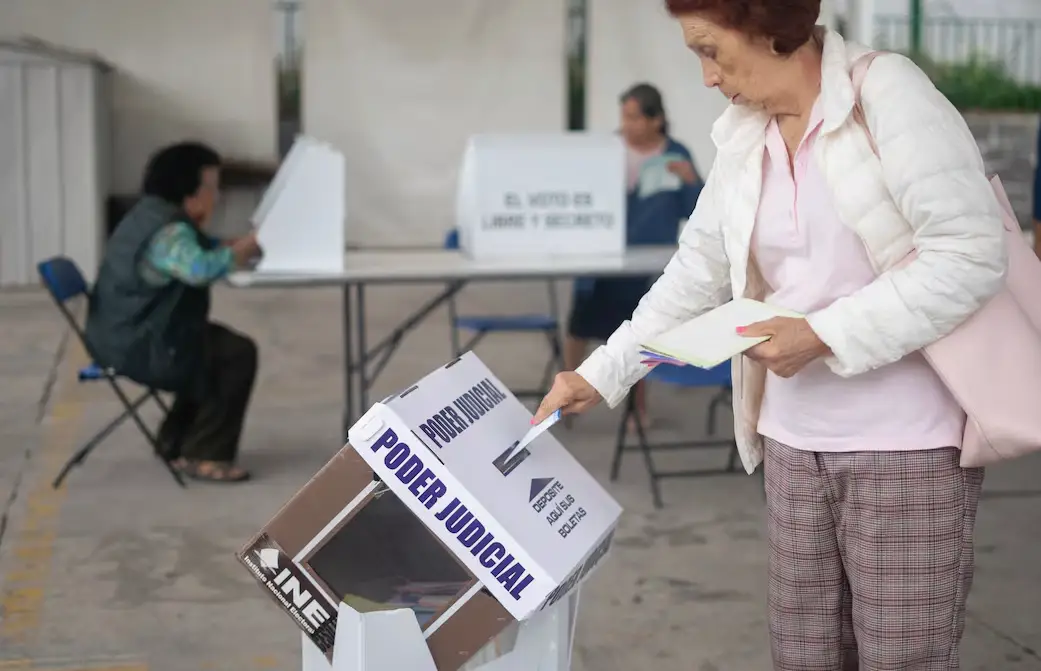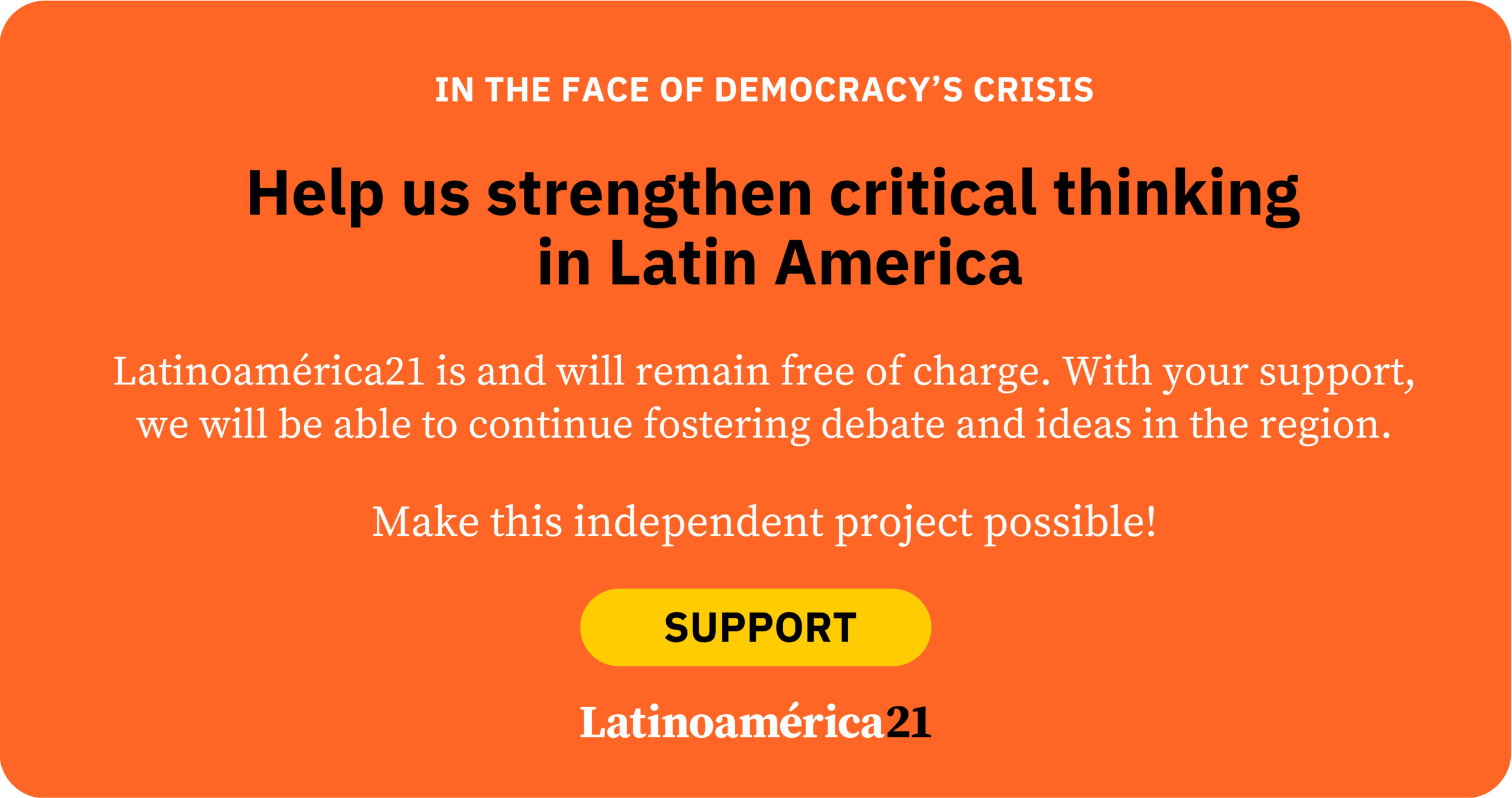On June 1, 2025, Mexico crossed an institutional threshold: for the first time in its history, members of the Supreme Court of Justice of the Nation, the Electoral Tribunal, the Judicial Discipline Tribunal, and other bodies of the judicial system were elected by popular vote. This reform, with profound structural implications, did not arise from a consensus-based technical diagnosis or from organized citizen pressure. It was the result of a narrative that, amid accumulated institutional fatigue, managed to consolidate its legitimacy.
For years, the justice system bore the brunt of public discredit: the perception of impunity, the opacity of many judges, the judiciary’s detachment from citizen causes, and a generalized image of elitism. In this context, the proposal to “democratize justice” through popular vote gained traction. What might once have seemed unthinkable, electing judges and magistrates as if they were deputies or mayors, became a politically viable solution in the face of a diffuse demand for change.
This narrative thrived largely due to the lack of effective opposition. Rather than articulating a technical defense of the republican model, traditional parties bore a clear co-responsibility for the degradation of the judicial system. For years, they had been part of, through action or omission, an institutional design that had lost legitimacy in the eyes of the public.
When the time came to participate, they chose to withdraw. They failed to promote competitive candidates, offered no alternative narrative, and did not publicly defend judicial independence from a citizen-oriented perspective. Some actors limited their intervention to critiques in closed forums, lacking mobilizing capacity or concrete proposals. Others simply remained silent. This omission, more from impotence than strategy, left the field open for an election without real competition, where the contest occurred almost exclusively between individual candidates with no political project behind them.
This abandonment cannot be understood without examining the internal deterioration of the parties that had dominated the political system for decades. The PAN (National Action Party) began to lose its identity when it ceased being a community of principles and became a pragmatic machine for accessing power. The exodus of historic figures such as Pablo Emilio Madero, Bernardo Bátiz, and Jesús González Schmal was an early warning. Instead of renewing its republican vocation, the party was taken over by local strongmen—like the Yunes in Veracruz or the Moreno Valle group in Puebla—who drained it ideologically.
The Institutional Revolutionary Party (PRI), for its part, began its decline after losing the presidency in 2000. With the end of hegemonic presidentialism also came the collapse of the internal discipline that had held it together. What followed was a slow territorial fragmentation, loss of leadership, and doctrinal breakdown. Though it regained power in 2012, the “new PRI” seemed focused on executing its own path to extinction. In this election, its role was purely symbolic.
The Democratic Revolution Party (PRD), finally, did not survive the leadership it helped elevate: that of Andrés Manuel López Obrador. Since 2012, its members and leadership migrated to Morena, and what was once a critically minded left turned into a hollow acronym—lacking structure, content, or social base. In this electoral process, it failed to even articulate a recognizable position.
But the deficiencies were not only political. On the technical front, the reform revealed deep weaknesses due to its hasty implementation. Eligibility requirements were lax, and although the opening of candidacies was presented as a democratizing gesture, most candidates lacked objective evaluations that could distinguish solid careers from improvised bids. This was compounded by the parties’ disinterest in raising the professional standards of the process.
The institutional communication model also fell short. Information was confusing, poorly scheduled, scattered, and lacked a clear pedagogical focus. There were no public debates or structured spaces to contrast candidates. Most citizens voted without clearly understanding the role of the person they were electing. The electoral authority, lacking sufficient time and tools, failed to translate the constitutional significance of the process into a comprehensible narrative.
Oversight also needs deep adjustments—not only to ensure transparency and fairness but to establish clear limits on financing and prevent the judiciary from becoming a new space for political clientelism. A particularly sensitive issue was the use of “crib sheets” or support materials during voting. The absence of specific regulation raised reasonable doubts about the validity of ballots. It is the INE’s responsibility to clearly define the scope and conditions of such materials for future processes.
All of this was reflected in one striking number: only 13% of the electorate participated in the election. Although legally valid, that participation level demands a deep review of the model: its limits, its shortcomings, and its possibilities. A more transparent, rigorous, and functional regulatory framework must be built before the next round in 2027.
Amid this panorama, one name stands out unmistakably: Hugo Aguilar Ortiz, a Mixtec lawyer, defender of Indigenous peoples, and the incoming president of the Supreme Court. He garnered around six million votes—an extraordinary number in a low-turnout election—reflecting not just territorial effectiveness, but a symbolic connection with historically excluded sectors. His candidacy embodied a different narrative: justice from the land, not from the desk; justice with an Indigenous face. And that narrative managed to transcend the boundaries of conventional political calculation.
Beyond criticisms over the use of prefabricated formats or visual aids, his vote count reveals the emergence of a new actor in the national political chessboard, with social legitimacy and symbolic power that are hard to ignore.
The 2025 judicial election should not be understood merely as an anomaly but as the beginning of a new constitutional era. If this model is to continue—as the Constitution now stipulates—its foundational flaws must be corrected: strengthen entry filters, ensure campaigns are subject to public scrutiny, foster informed participation, and accept that political actors have a historic responsibility they can no longer evade.
Justice has been opened to the popular vote. It is now a constitutional reality. It will not be otherwise. It must be reviewed, strengthened, and evaluated. And, when the time comes, once again submitted to the judgment of the ballot box in 2027.
*Machine translation proofread by Janaína da Silva













